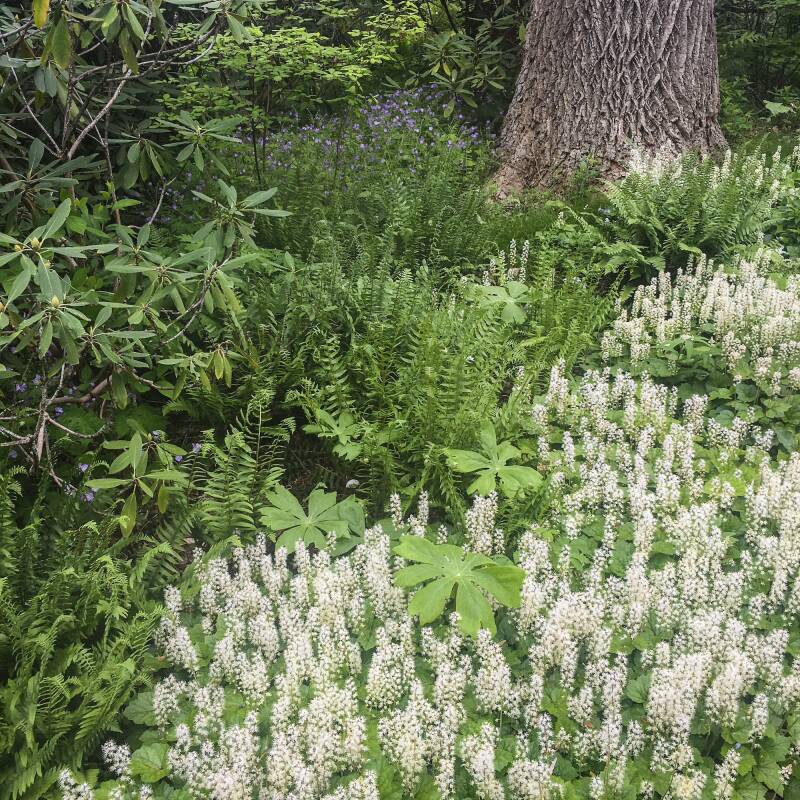Green mulch is most definitely not just traditional wood mulch dyed green. A quick Google search did find a heinous product consisting of rubber that is dyed green and sold as green mulch, but the green mulch of which I speak is the exact opposite of dyes and petroleum products: It is purely, authentically, bona fide plant-based. And for help teasing apart this verdant mulching concept, I reached out to Benjamin Vogt, author of A New Garden Ethic, and owner of Monarch Gardens, a prairie-inspired design firm.
Please keep reading to learn more about this super green mulching method:
What is green mulch?

While there are several answers to this question, Benjamin shares this succinct definition, “Green mulch is using plants to do the work of wood mulch, and it can simply be lots of plants, dense layers, and compatible plant communities tightly woven together.”
What are the benefits of using green mulch?
By using plants as the covering, you are helping to cool the soil, reduce runoff, and prevent hostile weed takeovers—essentially offering the same benefits as traditional mulch. In addition to those pluses, green mulch (also known as “living mulch”) also provides valuable habitats for wildlife and improves soil health. Aesthetically speaking, by using a mass of ground level plants, visual contrast can occur while also making a garden bed look tied together and more cohesive. Benjamin adds, “For me, I think of green mulch as showing intention, as well as helping folks who replace their front yards with gardens to better tie in with the dominant lawnscapes around them.”
What are some good green mulches to use?

Benjamin tells me that his favorite candidates are: Carex albicans, Carex rosea, Carex sprengelii, Carex blanda, Carex vulpinoidea, Bouteloua gracilis, Bouteloua curtipendula. He goes on to say, “That list gives you an assortment of species to use from sun to shade, moist to dry soils. And many are far more adaptable than we give them credit for.” Benjamin also shares that the lower height of sedges and grasses allows flowers to penetrate the green mulch at different layers.
So, flowers can be green much?

While there are endless flowering ground covers to use as green mulch, for example Geranium maculatum or Callirhoe involucrata, Benjamin encourages the use of planting what is endemic to a person’s eco region and best suited to the local climate and wildlife. Once some research is done on your native flowering plants, you can weave ground cover flowers among green mulch plants to give even more coverage and color.
For more low-impact gardening ideas, see:
- Ask the Expert: Regenerative Organic Gardener Emily Murphy on How to Rewild Your Landscape
- Ask the Expert: 5 Tips for a Sustainable Garden from Landscape Architect Marian Boswall
- Global Warming: 10 Gardening Ideas to Counter Climate Change












Have a Question or Comment About This Post?
Join the conversation (0)